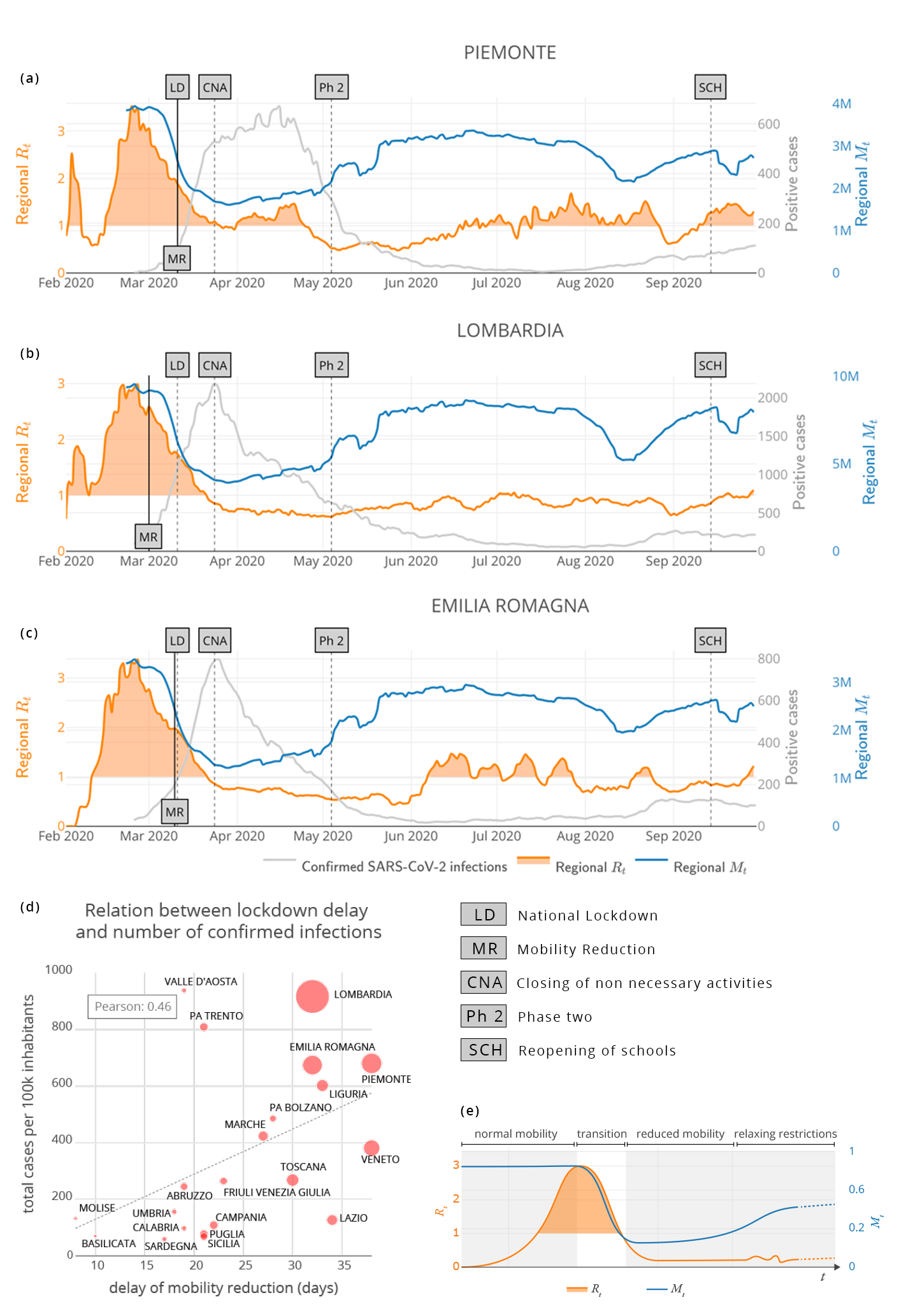- The paper demonstrates that a 60% reduction in mobility led to significant decreases in Rt, validating the effectiveness of lockdown measures.
- It employs functional data analysis and mobile-origin-destination matrices from major providers to quantify the temporal lag between mobility changes and viral spread.
- The study offers actionable insights for policy-making by linking prompt mobility restrictions with efficient control of viral transmission.
The Relationship Between Human Mobility and Viral Transmissibility During the COVID-19 Epidemics in Italy
Introduction
This paper investigates the correlation between human mobility and the spread of COVID-19 using data from Italy between February and September 2020. Researchers utilized mobile phone data to measure changes in mobility and analyzed its relationship to the net reproduction number (Rt) of COVID-19 across Italian regions. By assessing how mobility restrictions impacted viral transmission dynamics, this research provides insights for guiding public health interventions.
Data Collection and Methodology
The research leverages mobile phone data from Vodafone and WindTre, representing two-thirds of the Italian mobile user base, to evaluate mobility patterns at the national and regional levels. Mobility data was captured through Origin-Destination matrices reflecting daily movements between municipalities. Additionally, Rt, a critical epidemiological metric representing the average secondary infections caused by an infected individual, was calculated using case-based surveillance provided by regional health authorities.

Figure 1: Evolution of mobility flows between origin and destination regions, and regional Rt levels, showing decreases during restrictive measures.
Analysis of Mobility and Transmission
Analysis during the lockdown period revealed a sharp decrease in mobility (Mt), coinciding with reduced Rt values until they stabilized below 1. The lag in mobility reduction was found to correlate with the total number of infections, emphasizing the critical timing of interventions. Variations were observed across regions, attributed to local outbreaks and pre-lockdown activities, affecting how quickly regions could control viral spread.

Figure 2: Evolution of Mt, Rt, and confirmed infections between February and September 2020 for selected regions.
Functional Data Analysis and Temporal Lags
Functional Data Analysis (FDA) allowed an in-depth exploration of the temporal relationship between mobility and transmission. Using FDA, a two-week delay between Mt declines and Rt reductions was identified, with the regression models confirming a strong positive relationship, particularly pronounced in March and April. This implies that reducing mobility by approximately 60% relative to pre-pandemic levels effectively curtailed transmission.

Figure 3: FDA characterization of Rt and Mt with estimated effect surfaces and confidence bands.
Implications and Future Directions
The paper substantiates the effectiveness of mobility restrictions in suppressing virus transmission, providing quantitative evidence that timely interventions can mitigate public health impacts. The insights from this research hold significant implications for policy-making, particularly in optimizing lockdown measures and planning economic and social activity resumptions. Future research could further refine models by incorporating additional socio-economic factors affecting mobility behavior and compliance.
Conclusion
The research demonstrates a clear and quantifiable relationship between human mobility and viral transmissibility during the COVID-19 pandemic in Italy. By employing mobile phone data analytics, this paper underscores the potential for data-driven insights to inform public health responses efficiently, suggesting that continuous monitoring and prompt interventions based on mobility data can significantly influence epidemic control outcomes.


